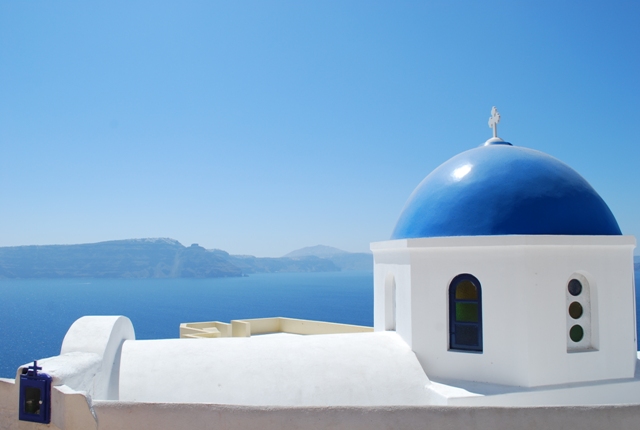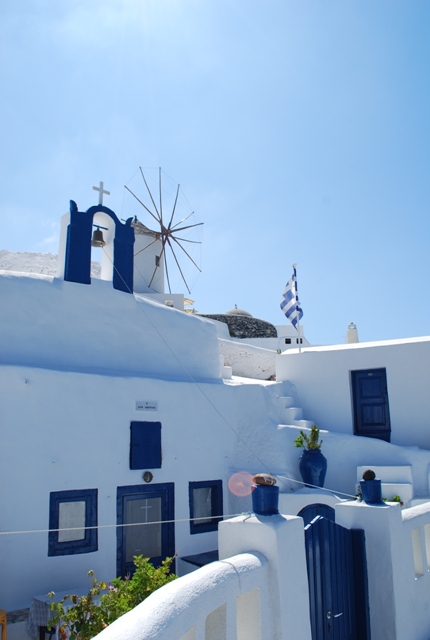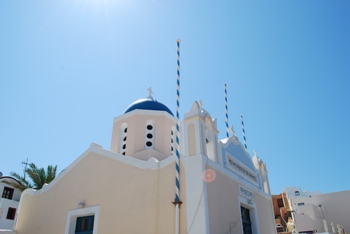The area of Oia, including Tholos and Foinikia hosts around 70 churches. Some of them have been built and others have been excavated just like the cave houses. The thing is that this large number of churches in such a small region is due to the maritime life of its habitants. This means that people used to build churches in order to ensure that the God would favor them with safe journeys. In particular, the relatives of the sailors and the captains, mainly their parents and their wives, promised to erect a church to a saint so that their beloved come back safe. The sailors and the captains on their part, used also to build churches promised to a saint because they had managed to survive during bad weather conditions or other dangerous situations. Consequently, most of these churches are privately owned as they were inherited by the ancestors of each family. The bonds of the families with their churches became even stricter as the dead family members were buried at these churches.

Church in Oia
The churches of Oia are devoted to various Saints and on the name day of each Saint a feast takes place at the church related to him/ her. The owners clean and adorn the church with flowers and the priests makes a ceremony in it. Peole are free to join the feast and enter the church. After the ceremony, they stay at the church yard where they eat all together, drink wine and dance as local musicians play the music and sing. This is very common in Santorini and all over Greece. This kind of feast is also called “village party” or panigyri and foreigners are always welcomed and treated respectfully.
All churches of Santorini are accompanied by a small room knows as panigyri-house where the vessels and the cooking cauldrons and other tools for the feast are stored. This is also where the food is stored until the ceremony ends and the feast starts. The yard of these housed is usually furnished with large benches and long tables for the dinner of the people who join the party. The largest panigyri-houses can be seen next to Saint Georgios church (Perivolas) and Kyra Panaghia church (Foinikia).

Oia church
The churches and the chapels of Oia are white and blue domed in general. However, most of them hide invaluable treasures inside, as they contain outstanding icons, carved iconostasis, frescoes and altars. Some icons, Episcopal thrones, icons stands, icons and chancels were brought from Russia while others had been carved by locals who had been taught wood carving in Constantinople. The local iconographers’ style seems to follow the Cretan school. There was a family of painters, named Sigalas, who are famous for a lot of icons they made for the local churches during the eighteenth and nineteenth centuries.
Exceptional art pieces can be seen in churches like Panaghia Platsani (Oia), Saint Georgios (Perivolas), Anastasis (Oia), Saint Spyridon (Oia) etc.
A list with most of Oia churches can be seen below:
Churches in Oia village
Oia church
• Saint Nikolaos Peramataris
• Zoodochos Pigi
• Anastasis
• Saint Spyridon
• Saints Hephtapaides
• Panaghia Platsani
Churches in Perivolas
• Saint Georgios
• Koimesis
• Saints Anargyroi
• Saint Vasileios
• Saints Theodoroi
Oia church

• Saint Matrona
• Saint Georgios
• Saint Ioannis
• Koimesis
• Saint Petros
• Evangelismos
• Saint Kyrikos and Ioulita
Churches in Tholos
• Saint Georgios
• Saint Athanasios
Other churches near Oia
• Saints Hephtapaides (in the cave)
• Prophet Helias
• High Cross
• Kyra Panaghia
• Saint Marina
• Panaghia tou Kalou
• Saint Georgios Xechreotis
